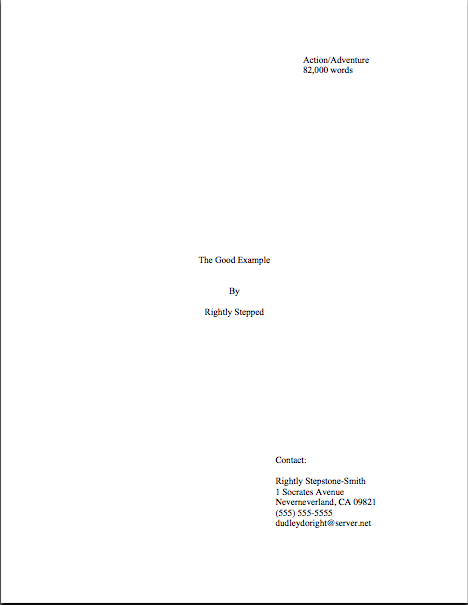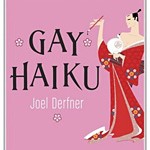
Did you miss me during my multi-day hiatus? As those of you who have been hanging around Author! Author! for a while are no doubt already aware, I seldom skip posting for that many days in a row, but I had a lulu of a migraine. An occupational hazard, I’m afraid, amongst those of us who spend 12-hour days staring at backlit screens and poring over manuscripts, pouncing on redundancies.
Seriously, most of the editors of my acquaintance are plagued by some form of chronic headache. We squint a lot. (As did painter Georgia O’Keeffe, apparently: the picture above is her drawing of a headache.)
And for good reason. Over the course of hours and hours of scanning manuscripts — as opposed to published books, which typically have already been subjected to at least one editorial eye — all of that repetitive word and phrase use starts to seem downright percussive. If not actually deliberate. So if you picture our pal Millicent the agency screener and me at our desks on the opposite sides of the country, fretfully rubbing our respective weary foreheads, you won’t be far off.
Admittedly, since many of you will be reading this the morning after St. Patrick’s day, all you may need to do to spot someone nursing an aching head is to glance into the next cubicle at work, but I’m making a point here. You will make all of the professional readers lurking in your future much, much less likely to associate your writing with aspirin if you put some effort into minimizing repetition in your submissions.
Why, look: we’ve returned to where we left off last time. This blog is a marvelous atmosphere for coincidence.
Last time, I brought up the issue of repetitive structure, the phenomenon of a writer’s falling in love with a certain kind of sentence and consequently over-using it throughout a manuscript. Like any other kind word and phrase repetition, professional readers find this distracting, and tend to dock manuscripts points for it. If you’re planning to slide your pages under the nose of Millicent, who tends to reject submissions after deducting the second (or even the first) point, or beneath the spectacles of a contest judge, who knows that two or three points often make the difference between an entry that reaches the finals and one that doesn’t, you might want to bear this in mind.
In case you forgot throughout the course of that long last sentence what you were supposed to be bearing in mind, here it is again: like any other kind of repetition, you might want to think twice about incorporating too much structural repetition into your preferred authorial voice.
After I made a similar suggestion last week, I could have sworn I sensed eyes rolling heavenward in writers’ garrets all across the globe. “Okay,” I heard repetition-huggers worldwide admitting reluctantly, “I can see why, for strategic reasons, I might want to minimize the use of repetitive structures in the first few pages of my manuscript, to get past Millicent or to improve my contest entry’s chances. As you said in your last post, though, an invocatory rhythm can be really cool at the end of a book, as well as to mark moments of emotional climax. If I minimize its use at the beginning of my manuscript, may I keep it elsewhere, or will Millicent fly into a tizzy if she spots it on page 102?”
The answer is, as it is so often in this business: it depends. If Millicent has already fallen in love with your voice, platform, and/or story, probably not. (Isn’t it fascinating just how many of the industry’s euphemisms for dealing with a book are amorous? I didn’t fall in love with this character; I adore this writer’s voice; the editor’s flirting with the idea of acquiring it, the critics are having a love affair with this author: it all sounds so torrid.)
Speaking as an editor, however, I have to say, an abrupt descent into the not-so-wonderful world of redundancy would make me wonder if the manuscript had been incompletely revised — and if the rest of the book was going to be first draft, instead of the second draft version that I had been enjoying so far. I would speculate about which was the real voice.
Would that suspicion just be the cynicism of an editor who has felt let down by too many promising beginnings in too many submissions? Not really — patchily-revised manuscripts are the norm for submissions, not the exception. A text that carefully varied its rhythms for 101 pages, but was redundant for the next 50, tells a professional reader that the writer either gave up mid-edit or changed his mind about what he wanted his voice to sound like in the middle of writing the book.
“Does that mean that Millicent would give that writer the benefit of the doubt?” I hear some of you piping up hopefully. “After all, the first 101 pages demonstrated that he could polish up his work. Wouldn’t it be worth taking a chance on a writer like that?”
Well, it depends, hopeful pipers-up. Does she have a repetition-induced migraine coming on?
That’s not an entirely flippant answer: the pros have a point about redundancy, you know. Even when the word choices vary enough to keep things interesting, it’s simply more tiring to read the same kind of sentence over and over than to read text where the form varies more. To see why this is true, we need look no farther than the early reader books of our youth.
You know the type, right? See Spot run. See Spot bite Dick. See Dick shiv Jane. Stab, Dick, stab.
Dull, from an adult perspective, weren’t they? But dull with a purpose: part of their point was to encourage new readers to recognize letter patterns as particular words. Varying the sentence structure enough to render the insipid story interesting to more advanced readers would merely have distracted from the task at hand.
So we were treated to the same sentence structure for what seemed like the entire book. I have a distinct memory of taking my kindergarten copy of FROG FUN home from school (Hop, frog, hop. Hop, hop, hop: hardly Thackeray), derisively reading a two pages of it to my father, and both of us deciding simultaneously that no reasonable human being would keep slogging through that much narrative repetition. He wrote a very amusing little note to my teacher about it.
I’ll spare you his choice comments about this particular authorial choice. Suffice it to say that my teacher quickly learned to send me to the library for alternate reading material. See Anne pick a better book. Pick, Anne, pick.
Millicent’s teachers, unfortunately, probably kept her nose to the simple sentence grindstone for quite a bit longer — and that’s bad for submitters. Why? Well, when a professional reader sees a manuscript that uses the same sentence structure or the same few verbs use over and over, the specters of Dick, Jane, and Spot seem to rise from the page, moaning, “This is not very sophisticated writing!”
Reject, Millie, reject.
Word and phrase repetition tends to engender this knee-jerk reaction, surprisingly, even if the chosen structure is quite complex. When one’s eye is trained to zero in on detail, it doesn’t take much redundancy to trigger a negative response. In fact, a good professional reader will often catch a repetition the FIRST time it recurs — as in the second time something is mentioned in the text. It’s not unheard-of for an editorial memo to contain a angry paragraph about “your inordinate fondness for phrase X” when phrase X shows up only three or four times in the entire manuscript.
As in over the course of 400 pages. We pros are trained to be extremely sensitive to redundancy.
Imagine, then, how much more annoying they find it when every third sentence begins with, It was cold when… or Breathlessly, George was… or the ever-popular, As she was doing X… .
Not a vivid enough horror picture for you? Okay, picture Millicent’s reaction to It was the best of times; it was the worst of times…
Reject, Millie, reject.
To repetition-sensitive eyes, the effect is like badly-done CGI in movies, where battle scenes between thousands of characters are created by filming 50 extras flailing at one another, copying that image, and plastering it seventeen times across the scene, perhaps alternated with two or three other images of the same actors in different positions.
Honestly, to those of us who count patterns for a living, repetition can be downright migraine-inducing. And I hate to be the one to break it to you, but repetitive phraseology can render even the most exciting, conflict-ridden scene quite a bit less nail-biting than its activity level should dictate.
“Wait just a nit-picking minute, Anne!” I hear you self-editors out there exclaiming. “English grammar only permits so many ways of arranging sentences properly. Isn’t ANY manuscript going to exhibit a certain amount of pattern repetition?”
Yes, of course — but that does not give writers carte blanche to use the same structures back-to-back, or to utilize a favorite complex sentence form twice per paragraph. And that’s unfortunate, because it’s not as though your garden-variety writer is repeating herself on purpose: the writer simply likes a kind of sentence or a particular verb enough to use it often.
I see that you’re not going to believe me until I give you a concrete example — nor should you, really. Since yesterday’s example from A TALE OF TWO CITIES was so obvious, here’s a subtle one. See if you can catch the problem:
Rubbing his sides for warmth, Stephen glanced unhappily at his fellow cheerleaders. Waving his pom-poms in a wan impression of good sportsmanship, he reminded himself never to be stupid enough to accept one of his sister’s bets again. Pulling up his flesh-colored tights — oh, why hadn’t he listened to Brian, who had told him to wear nylons under them on this near-freezing night? — he wondered if Tammy would be vicious enough to demand the performance of the promised splits before the game ended. Sighing, he figured she would. Realizing that running away now would only delay the inevitable ripping of his hamstrings, he furtively flexed his feet, trying to warm up his thigh muscles.
Quite the gerund-fest, isn’t it? Individually, there is nothing wrong with any given sentence in this paragraph. Yet taken communally — as sentences in submissions invariably are — the repetition of the same kind of opening each time starts to ring like a drumbeat in Millicent’s head, distracting her from the actual subject matter, the quality of the writing — and, alas, even the blistering pace the writer worked so hard to achieve on the page.
That’s not just a voice problem — it’s a marketing problem, because agents and editors generally cannot afford to work with specialists in a single type of sentence. (The career of Ernest Hemingway to the contrary.)
The sad thing is, most of the time, writers don’t even realize that they’re repeating patterns, because unless the repetition bug has really bitten them, the redundancy isn’t in EVERY sentence. Or if it is, the repetition often lies in words or phrases that are similar, but not identical:
Arnold began sweating, sweating as though his sweat glands were going on strike tomorrow. Should he go to the window and throw it open, beginning the cooling-down process? Or should he go downstairs, into the basement, to the cool of the pickle cellar?
Or the structures a writer favors may be common enough in themselves that he would actually need to read his pages IN HARD COPY and OUT LOUD (hint, hint) to catch the problem. As in:
“But I didn’t steal the payroll,” Claire insisted, “because I had no reason.”
“But you did take it,” Edward shot back, “because you needed the money for your sainted mother’s operation.”
Claire’s eyes filled with tears. “You leave my sainted mother out of it, since you don’t know her.”
These three lines of dialogue feature different words, of course, but they sport identical structures. That may not seem like a serious problem on any given page, but once a professional reader notices a manuscript exhibiting this kind of repetition a couple of times, she will simply assume (almost always rightly, as it happens) that the pattern will recur throughout the manuscript.
How does s/he know, you ask? Experience, my dears, experience. Let me put it this way: how many horror films did you have to see before you realized that the monster/killer/Creature from the Black Lagoon wasn’t REALLY dead the first time it appeared to be?
There’s another problem here. Go back and re-read that last example out loud: did you notice how similar those three paragraphs sound in the mouth — almost as though they were not actually the words of two different speakers?
The repetitive structure here makes Claire and Edward speak in essentially the same rhythm, as though they were echoes of the same voice. (Which, from an authorial point of view, they are.) When two characters speak in the same rhythm, it mutes the conflict between them a little. Check out how varying the sentence structure ramps up the tension between them, even in an excerpt this short:
“But I didn’t steal the payroll,” Claire insisted, “because I had no reason.”
“You lie,” Edward shot back. “You needed the money for your sainted mother’s operation.”
Claire’s eyes filled with tears. “You leave my sainted mother out of it. You don’t know her.”
Nifty trick, eh? That, in case you were wondering, is the kind of benefit a writer is likely to derive from reading her work OUT LOUD. (Had I mentioned that was a good idea?)
But a writer need not only pay attention to how many times he’s using the same words or similar sentence structures in back-to-back sentences, but also on any given page, or even over the course of a scene. Let’s take a look at how non-consecutive repetition might play out on the page:
As the car door opened, Bernice swallowed a horrified gasp. It was Harold’s severed hand, dragging itself around the latch mechanism, one grisly fingertip at a time. As she reached for the gun, her intestines palpitated, but she forced her arm to remain steady. While she loaded the bullets into the chamber, she thought about how much she had loved Harold, back when his constituent parts were all still interconnected as a human’s should be. It was a shame, really, to have to keep blowing him to bits. But blow him to bits she would continue to do, as often as necessary, until this nightmare of a prom night was over.
To most self-editors, this paragraph would not seem especially problematic. However, to a professional reader, it contains two of the most commonly-repeated structures, the While X was Happening, Y was Occurring and the It Was Z…, both big favorites with the aspiring writing set.
You kids today are into some crazy things.
Standing alone as sentences, either form is perfectly valid, of course; the problem arises when either appears too frequently on the page. Let’s take a look at how the paragraph above would scan to Millicent:
As the car door opened, Bernice swallowed a horrified gasp. It was Harold’s severed hand, dragging itself around the latch mechanism, one grisly fingertip at a time. As she reached for the gun, her intestines palpitated, but she forced her arm to remain steady. While she loaded the bullets into the chamber, she thought about how much she had loved Harold back when his constituent parts were all still interconnected as a human’s should be. It was a shame, really, to have to keep blowing him to bits. But blow him to bits she would continue to do, as often as necessary, until this nightmare of a prom night was over.
See how even spread-out repetition jumps off the page, once you’re attuned to it? Millicent –like her boss, and the editors at the publishing house across the street, and even the average contest judge after reading the first handful of entries — is SO sensitive to it that she might not even have made it as far as the end of the paragraph.
Reject, Millie, reject.
Of course, you may strike lucky: your submission may be read by a screener who hasn’t been at it very long, a contest judge brand-new to the game, or an agent whose tolerance for pattern repetition is unusually high. Heck, your work may even land on the desk of that rara avis, the saint who is willing to overlook some minor problems in a manuscript if the writer seems to have promising flair. In any of these cases, you may be able to put off winnowing out pattern repetition until after the book is sold to an editor — who is VERY unlikely to be so forgiving.
But do you honestly want to risk it at the submission stage?
Because editorial response to this kind of repetition tends to be so strong — I wasn’t kidding about those migraines — you would be well advised to check your first chapter, ESPECIALLY your opening page, for inadvertent pattern repetitions. Actually, since quick-skimming pros tend to concentrate upon the openings of sentences, you can get away with just checking the first few words after every period, in a pinch.
How might a time-pressed aspiring writer go about doing this, you ask? Sit down with five or ten pages of your manuscript and a number of different colored pens (highlighters are dandy for this). Mark each kind of sentence in its own color; reserve a special color for nouns and verbs that turn up more than once per page.
You probably already know what your favorite kinds of sentence are, but it would be an excellent idea to pre-designate colors for not only the ever-popular While X was Happening, Y was Occurring and the It Was… sentences, but also for the X happened and then Y happened and Gerund Adverb Comma (as in Sitting silently, Hortense felt like a spy.) forms as well, just on general principle.
After you have finished coloring your pages, arrange all of the marked-up pages along some bare surface — against the back of a couch, along a kitchen counter, diagonally across your bed — and take three steps backward. (Sorry, kitty; I didn’t mean to step on your tail.)
Does one color predominate? If you notice one color turning up many times per page — or two or three times per paragraph — you might want to think about reworking your structures a little. Or perhaps learning a few more.
If this all seems terribly nit-picky to you, well, it is. But the more you can vary the structure and rhythm of your writing, the more interesting it will be for the reader — and, from a professional perspective, the more it will appeal to educated readers. Think about it: good literary fiction very seldom relies heavily upon a single sentence structure throughout an entire text, does it?
You know what kinds of books use the same types of sentences over and over? The ones marketed to consumers with less-developed reading skills. If that is your target readership, great — run with the repetitive structure. (Run, Jane, run! Don’t let Dick stab, stab, stab you.) But for most adult markets, the industry assumes at least a 10th-grade reading level.
Then, too, agency screeners and editorial assistants typically hold liberal arts degrees from pretty good colleges. That’s a long, long way from the reading level that was contented to watch Dick and Jane running all over the place with Spot, isn’t it?
Let your structural choices be as exciting as the writing contained within them — and let your voice emerge as more than a repetitive collection of your favorite words and sentences. Let your beloved monsters appear rarely enough that their every groan and roar feels like a revelation.
I sense that I have at least one more post on redundancy in me, so I shall be revisiting the subject next time. Keep up the good work!































